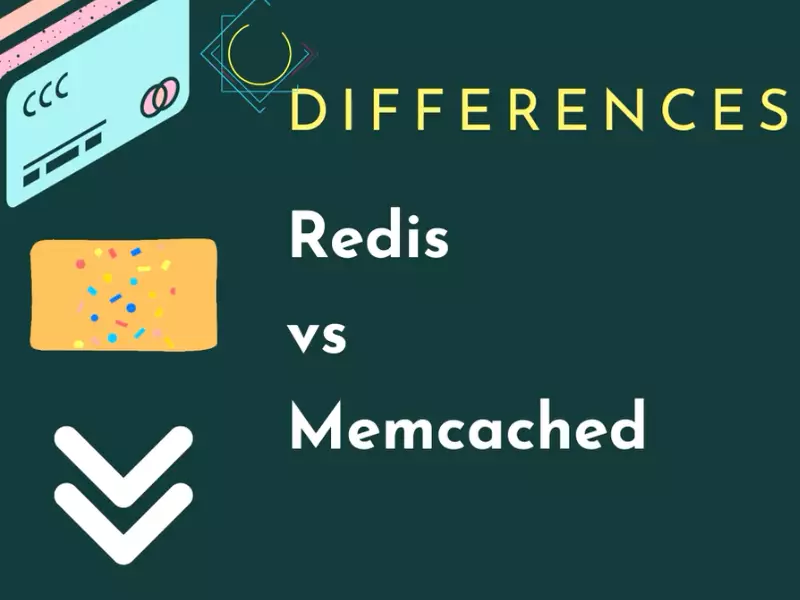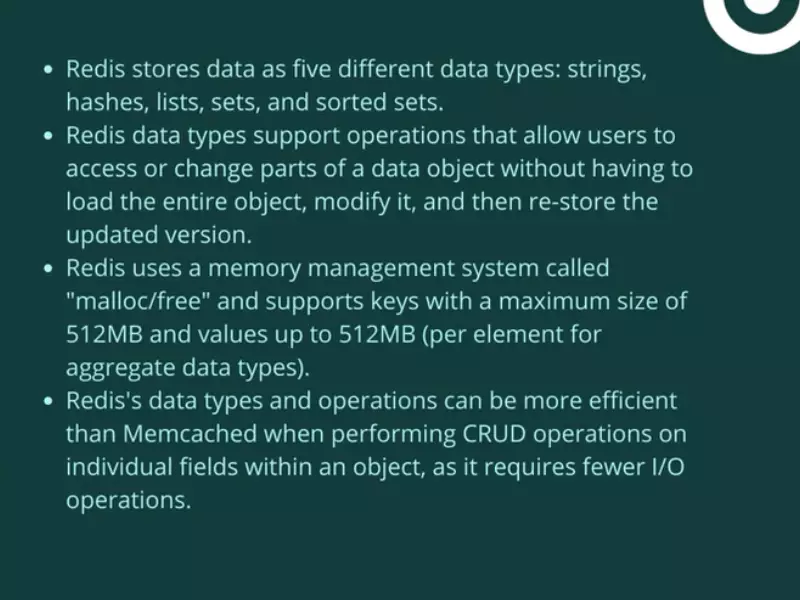In the realm of web development, optimizing application performance and scalability is paramount. Two pivotal technologies that stand at the forefront of enhancing web application efficiency through caching are Memcached and Redis. Both are in-memory data storage systems, yet they cater to different needs and offer distinct functionalities. These technologies are instrumental in reducing database load and increasing the speed of data retrieval, making them vital components in the architecture of high-performance web applications.
Memcached and Redis serve the primary function of caching but differ significantly in their approach and capabilities. Memcached is a high-performance, distributed memory caching system primarily used for simple key-value data. In contrast, Redis is an advanced key-value store that supports a wider range of data types and additional features such as data persistence, replication, and transactions. This fundamental difference outlines the unique applications and advantages of each system, guiding developers in choosing the right tool for their specific requirements.
Redis offers a versatile set of data structures for intricate data management scenarios, making it suitable for tasks requiring complex data manipulation and storage solutions. On the other hand, Memcached’s lightweight design and ease of use make it ideal for straightforward caching scenarios where quick data access is the primary concern. Both technologies play a crucial role in enhancing the performance of web applications, but their applications are dictated by the nature of the project requirements.

Memcached Overview
Origins and Development
Memcached, a high-performance distributed memory caching system, was initially developed by Brad Fitzpatrick for the popular website LiveJournal in 2003. Its primary purpose was to alleviate database load by caching data and objects in RAM, reducing the number of times an external data source (such as a database or API) must be read. This innovation significantly improved the response times of websites and applications by minimizing the reliance on slower disk-based storage.
Key Features
- High Performance: Memcached excels in speed, efficiently handling large volumes of requests per second.
- Simplicity: It operates on a simple key-value storage model, making it easy to implement and use.
- Distributed Caching: Allows data to be distributed across multiple servers, thus maximizing the use of available memory.
- Compatibility: Supports various languages and platforms, facilitating its integration into existing applications.
Typical Use Cases
- Session Storage: Frequently used for storing user sessions in web applications.
- Database Query Caching: Reduces the load on databases by caching the results of commonly executed queries.
- Caching HTML/Output: Temporarily stores parts of generated HTML pages or API responses to speed up web page rendering.
Redis Overview
Background and Evolution
Redis, which stands for Remote Dictionary Server, was created by Salvatore Sanfilippo in 2009. It started as a scalable and more feature-rich alternative to existing key-value stores, aiming to offer both high performance and a rich set of data structures. Over the years, Redis has grown in popularity and functionality, becoming a key player in the industry for applications requiring complex data manipulation and high-speed operations.
Core Features
- Rich Data Types: Supports strings, lists, sets, sorted sets, hashes, bitmaps, hyperloglogs, and geospatial indexes.
- Persistence: Offers options for data durability through snapshotting and append-only files (AOF).
- Atomic Operations: Provides support for transactions and ensures atomicity for complex operations.
- Pub/Sub Messaging: Facilitates building real-time messaging applications with its publish/subscribe capabilities.
Application Scenarios
- Real-time Analytics: Ideal for scenarios requiring fast data aggregation and manipulation.
- Message Brokering: Used in systems needing reliable message delivery mechanisms.
- Caching with Data Persistence: Suitable for applications where data needs to be quickly accessible but also persisted.
Key Differences
Data Types Supported
Memcached
Memcached primarily handles simple key-value pairs, which makes it straightforward but limits its use to basic caching scenarios.
Redis
Redis supports a variety of rich data types, including lists, sets, sorted sets, and hashes. This allows for more complex data structures to be efficiently managed and manipulated within the cache.
Performance
When comparing speed and efficiency, both Memcached and Redis are designed to offer high performance. However, the use cases can significantly impact which system performs better.
- Memcached shines in environments where simple key-value access patterns dominate, due to its minimalist design and focus on raw speed for basic caching operations.
- Redis, with its more complex data structures and additional features, is optimized for scenarios that require more than just simple caching, such as session management, message queuing, and real-time analytics.
Persistence
Memcached
Memcached is purely in-memory and non-persistent, meaning that data stored in Memcached is temporary and will be lost if the system restarts.
Redis
Redis offers options for data persistence, allowing it to serve not just as a cache but as a reliable store for critical data. This is achieved through mechanisms like snapshotting and AOF.
Clustering and High Availability
Memcached
Memcached provides basic clustering support, enabling horizontal scaling but with limited features for ensuring high availability.
Redis
Redis, on the other hand, includes advanced clustering and high availability features. It supports automatic partitioning, replication, and failover, making it suitable for applications that require robustness and uptime.
Use Cases
Ideal Scenarios for Memcached
- Temporary data caching where persistence is not required
- Situations where simple key-value storage is sufficient
- Environments prioritizing raw speed for basic operations
Ideal Scenarios for Redis
- Applications requiring complex data types and advanced features
- Systems in need of both caching and persistence
- Use cases that benefit from atomic operations and real-time analytics

Scaling and Management
Memcached Scaling
Strategies
Scaling Memcached involves adding more servers to the pool to distribute the cache load evenly. This horizontal scaling approach increases the cache capacity and can significantly enhance the performance of an application. Load balancers or consistent hashing techniques are commonly used to distribute data across the servers efficiently, ensuring that the system can retrieve data quickly regardless of which server it resides on.
Limitations
While scaling out Memcached can improve performance, it comes with its challenges. The primary limitation is the lack of built-in data persistence, meaning that any data stored in the cache is temporary. Additionally, scaling does not automatically handle data replication or failover, making it necessary to implement custom solutions for high availability.
Redis Scaling
Redis offers more advanced scaling options compared to Memcached. It supports both vertical scaling (increasing the resources of a single node) and horizontal scaling (adding more nodes to the system). Redis Cluster provides automatic sharding and replication, enabling the database to scale out across multiple nodes for increased capacity and fault tolerance.
Advanced Scaling Options
- Redis Sentinel provides high availability through monitoring, notifications, and automatic failover.
- Redis Cluster automatically partitions data across multiple Redis nodes, allowing for linear scaling of performance and capacity.
- Sharding involves dividing data into smaller chunks or shards, which can be distributed across multiple Redis instances.
Management Tools
Available Tools for Memcached
- Memcached-top: A console-based tool to monitor the stats of Memcached servers.
- Memcache.php: A web-based management interface for Memcached to view and manipulate cached data.
Available Tools for Redis
- Redis CLI: The command-line interface provides a simple way to interact with Redis.
- Redis Desktop Manager: A graphical user interface that allows for easy management of Redis databases.
- Redmon: A web-based application offering insights into Redis performance and metrics.
Security Features
Memcached Security Mechanisms
Memcached’s simplicity extends to its security features, which are minimal. It does not include built-in authentication or encryption, relying instead on network security measures to restrict access. It’s important to configure Memcached to listen only on private network interfaces and use firewalls to block unauthorized access.
Redis Security Features and Configurations
Redis offers more comprehensive security features than Memcached:
- Authentication: Redis can require a password before allowing clients to execute commands.
- Encryption: Starting with version 6, Redis supports SSL/TLS encryption for secure data transmission.
- Access Control Lists (ACLs): Administrators can define which commands are available to specific users, providing fine-grained access control.
Community and Support
Overview of Community Support for Memcached
Memcached benefits from a long-standing and stable community. Various online forums, mailing lists, and a dedicated IRC channel provide platforms for support and discussion. However, the community activity around Memcached is not as vibrant as it once was, given the shift of interest towards more feature-rich databases like Redis.
Overview of Community Support for Redis
The Redis community is active and growing, with extensive documentation, tutorials, and third-party tools available. Redis enjoys strong community engagement through mailing lists, a dedicated subreddit, and numerous conferences worldwide. The Redis community also contributes to a wide array of client libraries and tools, enhancing its ecosystem.
Costs and Licensing
Open-source Nature of Both Technologies
Both Memcached and Redis are open-source technologies, available under liberal licenses that allow free usage and modification. Memcached is released under the MIT license, while Redis is under the BSD license. This open-source nature encourages adoption and contribution, leading to robust, well-tested software.
Considerations for Commercial Support
While both technologies can be used freely, there are scenarios where organizations may seek commercial support for deployment, scaling, and managing their caching solutions.
- Memcached: Fewer companies offer commercial support for Memcached compared to Redis. However, managed Memcached services are available from cloud providers like Amazon Web Services and Google Cloud Platform.
- Redis: Redis Labs, the company behind Redis, offers Redis Enterprise with advanced features, 24/7 support, and guaranteed SLAs for businesses requiring high performance and reliability. Other cloud services also offer managed Redis instances with varying levels of support and customization.
Frequently Asked Questions
What is in-memory caching?
In-memory caching is a method to store data in the main memory (RAM) of a server, allowing for faster access compared to disk-based databases. This technique significantly reduces data access times, improving application performance by minimizing database load and latency.
How do Memcached and Redis differ in data type support?
Memcached primarily supports simple key-value pairs, making it suitable for straightforward caching requirements. Redis, however, offers support for a wide range of data types including strings, lists, sets, sorted sets, and hashes, enabling more complex data structure management and manipulation.
Can Redis be used as a database?
Yes, Redis can be used as a database due to its ability to persist data to disk, support for various data types, and transactional capabilities. Its advanced features make it a versatile tool that can serve as a caching layer or a primary data store for certain types of applications.
Is Memcached or Redis more suitable for large-scale applications?
Both Memcached and Redis are capable of scaling to meet the demands of large-scale applications, but the choice depends on the specific requirements. Redis, with its advanced features like data persistence, sophisticated data types, and built-in clustering, is often preferred for complex, high-performance applications requiring durability and complex data manipulation.
Conclusion
Choosing between Memcached and Redis depends on the specific needs of a web application. While Memcached offers simplicity and speed for basic caching scenarios, Redis provides a comprehensive suite of features that cater to more complex data storage and manipulation needs. The decision should be guided by factors such as the required data structures, the need for data persistence, and the complexity of the caching strategies employed.
Ultimately, both Memcached and Redis have their place in the development of efficient, scalable web applications. By carefully considering the unique characteristics and advantages of each, developers can optimize their applications’ performance, ensuring quick data access and a seamless user experience. The right caching solution not only enhances application speed but also contributes significantly to its scalability and reliability, marking the importance of informed technology selection in modern web development.
